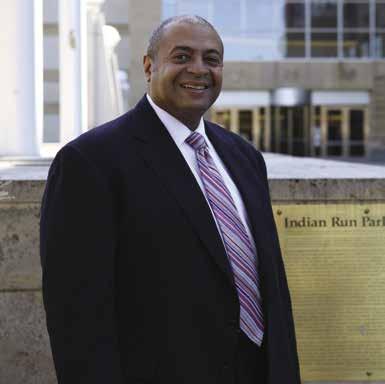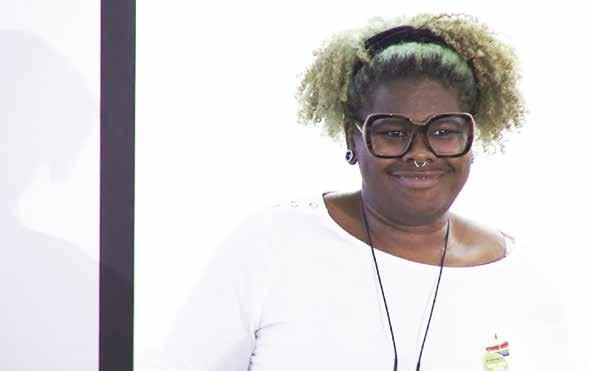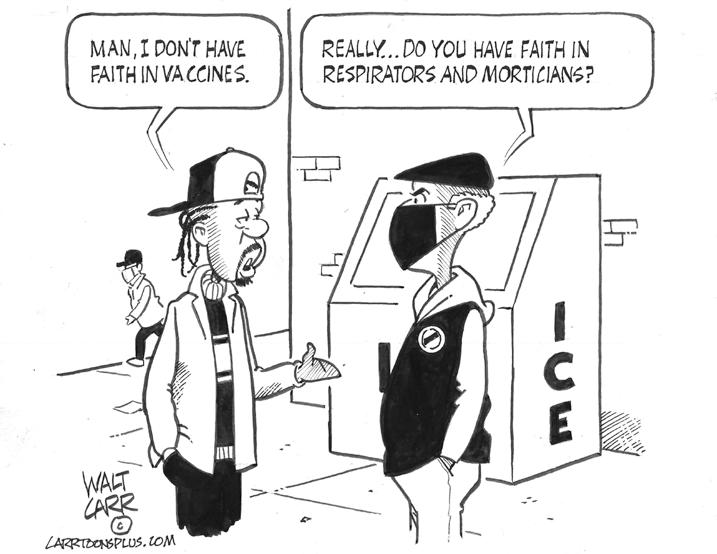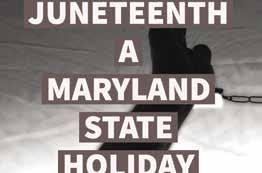
8 minute read
Business
The Rise and Fall of an American Essential – The Neighborhood Payphone
Stacy M. Brown WI Senior Writer
Remember when? Regardless of whether you are a Baby Boomer, Millennial, or Generation X, it’s a question that often comes to the forefront.
However, there’s one “remember when” question that will probably stump even the most the progressive Generation Z crowd: Whatever happened to America’s many public payphones and phone booths?
Wait. What? For at least a century, a payphone was as crucial as a mailbox. And while coin-operated public telephone first cost five cents before rising to one dime, then a quarter, 35 cents and even 50 cents, few people complained – at least not loudly.
At least you never had to worry about answering a call while driving.
When the beeper or pager alerted the holder that someone needed to reach them, the neighborhood phone booth would be the next stop. (Beepers, or pagers, are now as outdated as the payphone).
And, like beepers and pagers, virtually no one uses the payphone anymore.
A recent Pew Research Center report noted that about 96 percent of Americans own cell phones. But like most out-of-date technology, there are still a few payphones around.
“As someone who is, shall we say, more mature, my memory isn’t as good as it was,” offered entrepre-
James G. Davis Construction Corporation (DAVIS) is seeking qualified Small Business Enterprises (SBE) / Certified Business Enterprises (CBE) contractors for their participation in the St. Elizabeth’s Parcel 17 (1200 Sycamore Drive, SE) project. At this time, we seek qualified bidders in Divisions 03, 05, 07, 09, 14, 21, 22, 23, 26, 28, 31, 32, and 33. Please contact Kelly Mullins at kmullins@davisconstruction.com for project details. Documents will be available March 24, 2021. Bids for this project are due by 2:00 pm on Tuesday, April 21, 2021.
All interested bidders please contact
DAVIS Construction Attn: Kelly Mullins 12530 Parklawn Drive Rockville, MD 20852 Phone: 202-815-9946 Fax: 301-468-3918 neur Sally Gibson. “Plus, I’m not wonderful with technology.”
But recently she found it necessary to track down a payphone and the search was on.
“I had gone out to do some shopping but forgotten to take my phone with me. I realized after shopping I had too much to walk home with so I was going to phone for a taxi. Realizing I didn’t have my phone with me, the only other option I could see was using a phone booth for the first time in years.”
John Stevenson, a marketing specialist, said a payphone recently saved his day.
“I was driving to meet a client when I forgot my mobile phone in the office,” he said. “Fortunately, we still have phone booths on a few streets nearby. I called my subordinate about my concern and saved the time I would have lost going back home. It might be out of style but there are still people who rely on these phone booths.”
According to the U.S. Federal Communications Commission, roughly 100,000 payphones remain in the U.S. – down from 2 million in 1999.
While the majority of phones are in New York, the District still has a few public booths in operation including at the Capital One Arena and outside of a few hotels like the Comfort Inn on H Street, NW, Dupont Plaza Hotel on New Hampshire Avenue, NW and the Days Inn on Connecticut Avenue, NW.
Other than the advent of cellphones, what else caused the demise of public payphones?
A 2017 report in The Atlantic said a “particularly intense lobby for a payphone ban emerged in Chicago in 1992. Concerned about a rise in drug trafficking, communities urged lawmakers to get rid of payphones across the city.
The remaining payphones had become a relic, and to some, something of a prop.
The Jerusalem Post cited Julia Casciotti, a 17-year-old senior at Washington-Lee High School who crammed into a phone booth along with a few girlfriends for photoshoots after sleepovers. Over the years, Casciotti also made pretend calls, “pushing all the buttons and calling the operator.”
“It’s always just been there,” she said while noting that she’s never actually used the payphone or seen anyone use it either.
But Daniel Leblanc, 22, has seen people drop their coins into the payphone slot and said it freaked him out. An intern on Capitol Hill who lives in an apartment nearby, he walks by a phone booth on his way to and from the Metro.
Leblanc uses a cellphone and doesn’t have a landline at home like many young people today.
“The couple times I’ve seen people using it, I’ve thought, ‘That is really strange,’ “Leblanc told the newspaper. “Frankly, I wondered, ‘Don’t those people have cellphones?’”
WI @StacyBrownMedia
5 Once upon a time, pay phones were a staple on almost every street corner. After searching high and low, a pay phone was located during a drive on I-95. (DR Barnes/ The Washington Informer)
Fast forward – from 2000 to 2006, the number of cellphones in the U.S. rose from 90.6 million to 217.4 million. In the District in 2011, Metro announced the elimination of most of the 1,074 payphones in its train stations.
But one caveat cannot be overlooked: Metro once had a lucrative contract with Verizon who provided service for all the phone booths in Metro’s many train stations. Then, total revenue generated from the phones began a steep and steady decline. In 2009, Metro officials said payphones were losing hundreds of thousands of dollars while the average use declined to about once a day.
TWO RIVERS PUBLIC CHARTER SCHOOL REQUEST FOR PROPOSALS
General Contractor
Two Rivers PCS is soliciting price quotes from licensed general contractors to renovate existing spaces in school facilities. To request a copy of the RFP, email Gail Williams at procurement@tworiverspcs.org. Proposals are due by April 22, 2021.
Louis Armstrong, Nas, Janet Jackson Recorded in Library of Congress
Sarafina Wright WI Contributing Writer
Janet Jackson’s call for action and healing in “Rhythm Nation 1814” now joins other groundbreaking sounds of history and culture among the latest titles inducted into the National Recording Registry of the Library of Congress. Other notables include Louis Armstrong’s “When the Saints Go Marching In,” Labelle’s “Lady Marmalade,” Nas’ “Illmatic,” Kool & the Gang’s “Celebration,” and Kermit the Frog’s “The Rainbow Connection.”
Librarian of Congress Carla Hayden last month named 25 recordings as audio treasures worthy of preservation for all time based on their cultural, historical or aesthetic importance to the nation’s recorded sound heritage.
“The National Recording Registry will preserve our history through these vibrant recordings of music and voices that have reflected our humanity and shaped said. “Sometimes the questions are more beautiful than the answers.”
The latest selections named to the registry, spanning from 1878 to 2008, range from pop, hip-hop and country to Latin, Hawaiian, jazz, blues, gospel, classical and children’s music.
Additionally Jackson’s “Rhythm Nation 1814,” released in 1989 is touted by the library as resonating with social messages today.
Written and recorded in the Minneapolis studios of James “Jimmy Jam” Harris III and Terry Lewis, the songwriters said the record was about Jackson finding her voice using it to address racism, police brutality and social injustices of the day.
“We wanted 'Rhythm Nation' to really communicate empowerment,” Harris said. “It was making an observation, but it was also a call to action. Janet's purpose was to lead people and do it through music, which I think is the ultimate uniter of people.”
Some albums inducted this year demonstrate the power to influence entire genres of music.
The library says when Nas released his 1994 hip-hop album “Illmatic,” it was celebrated for its rhythmic originality and complexity, and its technique has been widely copied since.
The selections also include groundbreaking recordings in jazz, the blues and gospel — reaching deeper into music history.
Louis Armstrong and his orchestra’s 1938 recording of “When the Saints Go Marching In,” for example, was the first jazz recording of this famous hymn and broke barriers between church and dance hall by mixing a sacred song with jazz.
Musician Branford Marsalis credits Armstrong’s recording for making a previously regional song an international one. He recalled playing “The Saints” with his brother Wynton Marsalis while growing up in New Orleans.
“As kids in the late 1960s, Wynton and I learned it when I was still playing clarinet; Wynton playing the melody, and me playing the bass
our culture from the past 143 years,” Hayden said.
“We received about 900 public nominations this year for recordings to add to the registry, and we welcome the public’s input as the Library of Congress and its partners preserve the diverse sounds of history and culture.”
The recordings most recently selected for the National Recording Registry bring the number of titles on the registry to 575, representing a small portion of the national library’s recorded sound collection of nearly 4 million items.
The Library of Congress says one song has appealed to generations of Muppets fans and many musicians who revived “The Rainbow Connection” over the decades since it was performed by Jim Henson as Kermit the Frog in 1979.
Songwriter Paul Williams, who wrote the music and lyrics with Kenneth Ascher, said the song is about “the immense power of faith.”
“We don't know how it works, but we believe that it does,” Williams notes. … It’s the first song we played together,” Branford Marsalis said.
“I can’t imagine New Orleans’ culture without this song. It is an indelible part of our history.” WI
5 (Muppets image credit: © Muppets Studio)
WE’RE HERE FOR YOU
For the small victories. For the late night hours. For when your dreams become reality. As your business banking partner, we ’ re here to find solutions that will work for you.
BUSINESS BANKING


Business Loans Free Business Checking* Remote Deposit Capture Treasury Management Credit Cards


*$100 to open.







